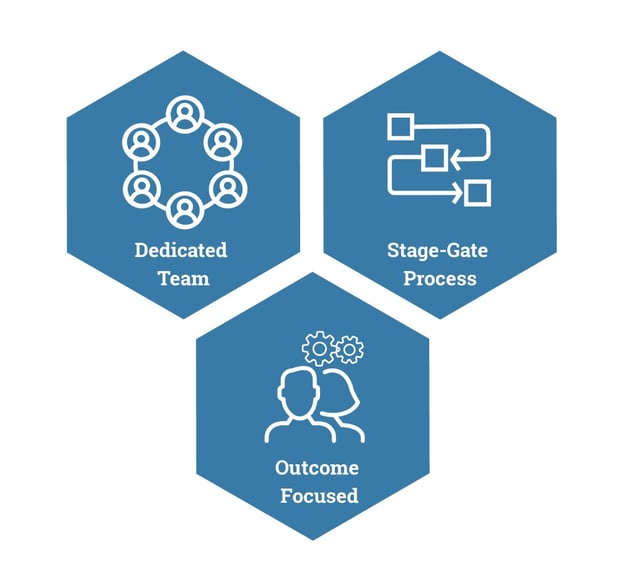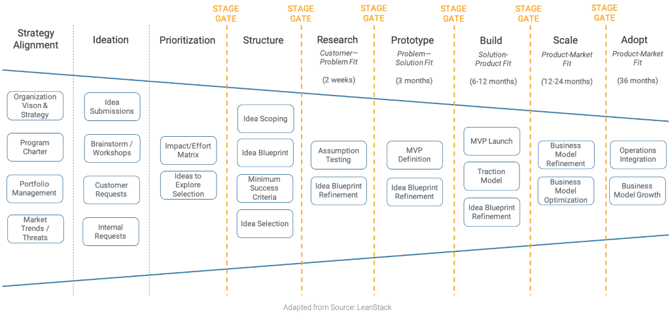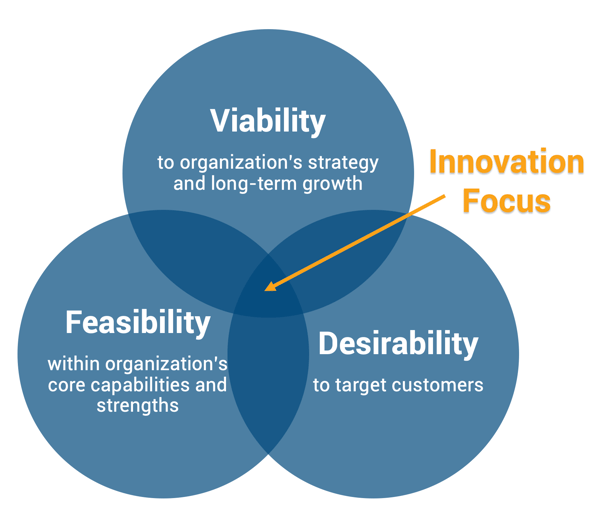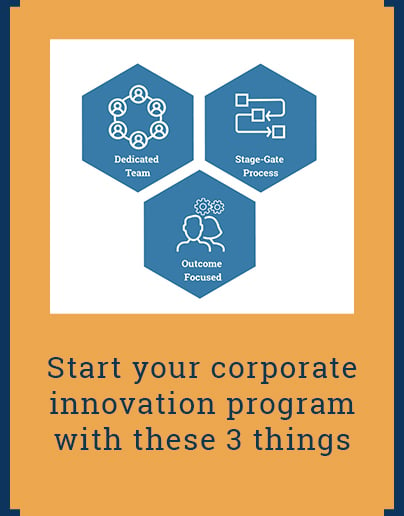Our research and work with several Fortune 500 companies taught us that there are three (3) must-have requirements to build innovation. Successful innovative organizations invest in a dedicated team, adopt frameworks to support ingenuity while simultaneously decreasing risk, and stay maniacally-focused to surfacing and prioritizing ideas that solve meaningful customer problems.

Dedicated innovation team
By “dedicated,” we mean that this team is solely focused on innovation and not adding “being innovative” to the long list of what’s already their day job. That's an easy way to set innovation up for failure.
Structured innovation labs or programs can be set up in a number of ways:
- one core team involved in every innovation project
- a different team per project
- rotate employees in and out of the lab on tours of duty to maintain fresh thinking
However you decide to structure your innovation lab or program (a decision we often help companies with), make sure your teams have the time and focus to dedicate to it.
Similar to a lean startup, you want a lean, cross-functional team with autonomy, budget, and a bias towards action running your innovations. This team is going to be out in the field asking questions and talking to users, so this team should be scrappy, motivated, and outgoing.
At minimum, the team is comprised of a product manager, user researcher, and finance modeler / business liaison to help ensure the product meets business goals. Take note: I didn’t mention a developer(s) here. Depending on your business, you might not need one until much later. Unless you are a software company or have a platform-heavy business, having developer(s) on the team from the start often means building solutions from the start versus validating the problem first.
Decision-making stage-gate process
Ideas within the innovation program shouldn’t be force fit into existing business processes (see our post on 4 reasons innovation fails for more on this).
Instead, your innovation program should follow an agile process framework that values time-boxed iterations, incremental investments, early customer / market feedback, and stage-gate decision points—complete with executive committee buy-in. Each stage-gate requires you and your stakeholders to decide if an idea should move forward and receive continued investment, change based on new insights, or be thrown away because it’s no longer worth pursuing. A stage-gate process with mandatory decision points allows better control both risk and investment of innovation pursuits.

Idea Funnel adapted from LeanStack
Outcome-focused teams
New innovations and initiatives need to be obsessively focused with solving high-value customer problems that fit within the business’s strategy, priorities, capabilities, and culture.
IDEO simplified this concept into three (3) criteria for new products and innovations: desirability, feasibility, and viability.
- Desirability : Do our customers want this innovative product / service / feature? Does it solve a real need for them?
- Viability : Can we provide this innovation at a price that customers will pay for it and will also make the company a profit? Does it scale?
- Feasibility : Is this an innovation that our company should be involved with at all? Does it play into our core strengths? Can we deliver on it?

Straying from this “sweet spot for innovation” results in tackling ideas that ultimately aren’t cost sustainable, well-suited for your particular organization to solve, or wanted by consumers.
Maintaining focus on achieving outcomes—solving real customer problems that your organization is positioned to solve—is what gives innovation programs at established companies traction.
Read more of Intevity's Innovation Insights including how we both prioritize and kill innovation ideas.

